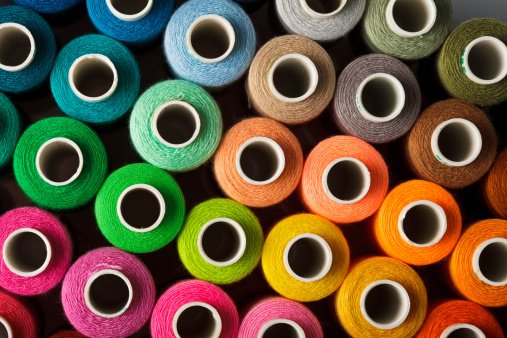A Comprehensive Guide to Basic Sewing Stitches for Effective Performance
In a very real sense, sewing is the glue that binds the fashion world together. The fabric and the many hand- or machine-made stitches, threads, and finishes that hold it together determine the majority of produced clothing.
Anyone working in the clothing industry nowadays must be able to distinguish between the various kinds of stitches being utilized.
In this article we will talk about a comprehensive guide to basic sewing stitches to help you execute your work effectively.
What is Sewing?
Sewing is the act of creating or mending clothing or other items with the aid of a needle and thread.
This is very simple to comprehend, right? Now, let’s look at the basic sewing stitches:
Running Stitch
Clothes were only created by hand before the Singer, the Bernina, and the several other sewing machines on the market became standard household and industrial equipment.
This includes all sewing-related steps (hemming an edge, joining two separate pieces of cloth, finishing a seam, etc.).
The following fundamental stitches are still used frequently nowadays when sewing clothing by hand.
Operating Stitch
The most fundamental and often used stitch is the running stitch, in which the needle and thread simply cross over and under two pieces of fabric.
The only difference between it and a basting stitch is how tightly it is sewed to form a strong, long-lasting binding. The dashed line of thread created by the intervals between each stitch on both sides of the fabric identifies the technique.
Basting Stitch
One of the simplest sewing stitches, basting is used to stably bind two pieces of fabric together. Consider it as a “rough draft” that will eventually be discarded and replaced by a stronger, longer-lasting stitch.
It is executed swiftly with a straightforward over/under motion, creating a long, loose stitch that is simple to take out. It is also known as a tack stitch.
Back Stitch
The back stitch is a variant of the running stitch in which the needle and thread double back on themselves after each pass.
This produces a more refined straight line of thread on the fabric’s surface by removing the visible spacing—the dashed effect—found in the running stitch.
Catch Stitch
One of the common stitching methods used for hemming is the catch stitch, often known as the cross stitch. The underside of a piece of fabric is decorated with a zig-zag pattern of Xs when this stitch is used. These stitches are strong and flexible, barely noticeable from the exterior of a garment, and provide a tidy finish for raw edges.
Slip Stitch
The slip stitch is another excellent stitch for fixing hemlines and is a strong, sturdy, and long-lasting technique to finish a garment.
But utilizing a slip stitch yields an almost undetectable bond on both sides of the fabric, unlike the catch stitch.
Machine Stitches
Early in the 18th century, the invention of the sewing machine significantly transformed the textile business by streamlining manufacturing and altering how clothing was traditionally created.
Nearly all clothing construction is now done by machines.
Although these machines frequently have a wide range of capabilities, practically all of them can execute these three fundamental stitches.
Straight Stitch
The straight stitch is made up of several straight stitches that are evenly spaced apart and of the same length. It is the most used stitch and the foundation for almost all types of sewing machines.
Backward Stitch
The ability of the machine to execute the straight stitch in verse is what the reverse stitch is. This skill is useful for securing the start and finish of any other stitch and preventing unraveling or shape loss of the thread.
Zigzag Stitch
In the zigzag stitch, the needle and thread alternately move back and forth at different angles. After the running stitch, it is the second most popular stitch used today and is found in almost all sewing machines.
It is frequently used because of its strength to reinforce buttonholes, finish seams and raw edges, and finish seams in flexible materials.
Conclusion
A variety of hemming stitches, and ornamental stitches are all usually said to be capabilities of sewing machines, both commercial and household types.
Every brand and model has a different selection that is peculiar to that machine, thus it all relies on the one in question to achieve your desired result.

![SUSTAINABLE ECO SWAPS: Eco-Friendly Alternatives to Everyday Products [2024 GUIDE]](https://nairamine.org/wp-content/uploads/2024/07/ab-768x513.webp)
